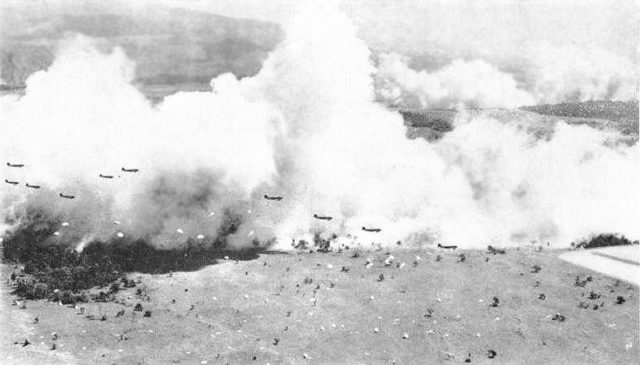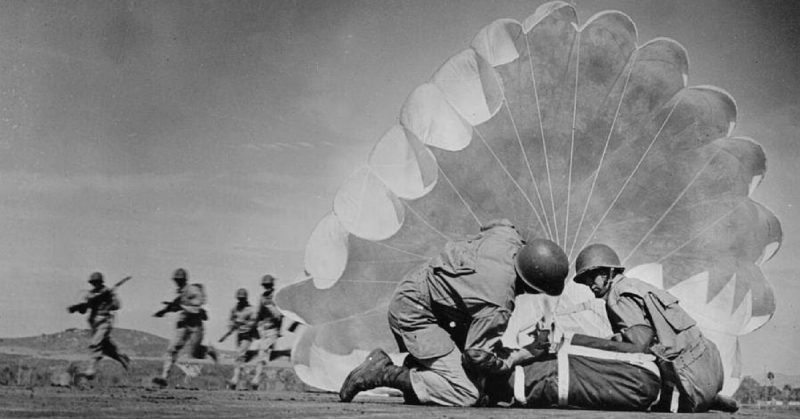In 1930, the US Army experimented with the concept of parachuting three-man heavy-machine-gun teams. Nothing came of these early experiments.
The first US airborne unit began as a test platoon formed from part of the 29th Infantry Regiment, in July 1940. The platoon leader was 1st Lieutenant William T. Ryder, who made his first paratroop jump for the US Military on August 13, 1940, at Lawson Field, Fort Benning, GA from a B-18 Bomber. He was immediately followed by Private William N. King, the first enlisted soldier to make a parachute jump.
Although airborne units were not popular with the top U.S. Army commanders, President Franklin D. Roosevelt sponsored the concept, and Major General William C. Lee organized the first paratroop platoon. This led to the Provisional Parachute Group, and then the United States Airborne Command. General Lee was the first commander at the new parachute school at Fort Benning, in west-central Georgia.
The US Army regards Major General William C. Lee as the father of the Airborne.
The first US Army Combat Jump was near Oran, Algeria, in North Africa on November 8, 1942, conducted by elements of the 509th Parachute Infantry. In Europe, this was followed by jumps on Sicily, in France both at Normandy and on the South Coast, The Netherlands, and Germany by the 17th, 82nd, and 101st Airborne, together with airborne divisions and brigades from the UK, France, Poland and others.

In the Pacific theater, Paratroopers were used in the Philippines, New Guinea, and in Burma. The US 503rd Parachute Infantry Regiment, elements of the Australian Army’s 2/4th Field Regiment and an ad hoc parachute battalion group made up of personnel from the 153 and 154 (Gurkha) Parachute Battalions of the Indian Army were used in these landings.
https://www.youtube.com/watch?v=P_Iu0Vu9Reo
